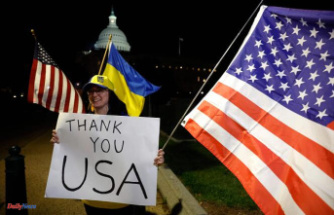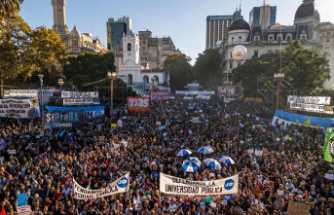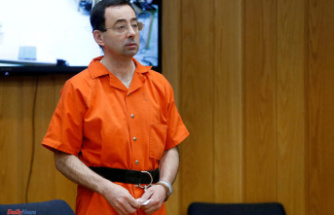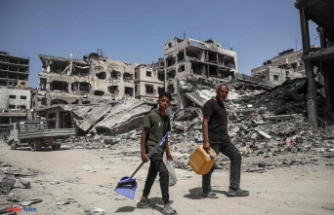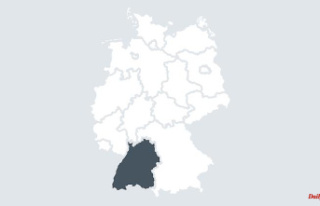"As a child, I used to sleep in the back seat of my parents' cars, and I remember the scent of palm groves at the edge of town reminding me of home," recalls Ghassan al-Khunaizi. He is a poet who was born in Qatif, Eastern Province, Saudi Arabia.
The artist Hussein Al-Mohasen is his friend. As the Kingdom continues its remorseless march towards modernization, the building will be demolished. The neighbourhood will see the construction of a new four-lane highway.
Both men are optimistic about the situation, stating that they are being compensated fully and that these projects are necessary to improve the quality of life in the area.
They stand in a room stuffed to the brim with books, lithographs, and paintings and say that concrete memories will not be lost. Ghassan's childhood memories of palm groves in the 1960s are long gone.
A vast museum complex, located 45 minutes away, is home to some of their latest work. It hosts an exhibition that unites artists from Saudi Arabia's east and west in an examination of how the concept of place (or makan in Arabic) means to them.
This massive structure rises at the edge of Al-Khobar, one of three conjoined cities along with Dammam and Dhahran on the Gulf coast. The design is meant to echo the landscape as though five large boulders were gathered together to create a shelter on the escarpment. The first impression might seem more like something less rare to the casual observer.
The King Abdulaziz Center for World Culture, also known as Ithra, dates back to a decade. This is long before the rapid pace of cultural and socio-economic transformation seen under Crown Prince Mohammed bin Salman. Saudis and expatriates flock there late into the night to see its extensive galleries on Islam, natural history, and modern art. A lone musician plays the oud inside the large entrance hall.
Abdullah al-Rashid is the Centre's new head. He says that Ithra was an innovator in Saudi Arabia's arts and culture scene. This happened as the country emerged from a conservative Islam where there were unspoken bans on all forms of artistic expression.
Al-Rashid, a tall Adam Driver-like lookalike, said that the centre was built to be ready for change. For example, the installation of a state-of-the-art cinema in the complex, at a time when it seemed impossible to show films in public places in Saudi Arabia, is an example of how the centre was designed.
Cinemas are now common in the Kingdom, with many entertainment options available in major cities. Al-Rashid claims that the goal of the institution he heads is not to provoke or push boundaries, but to broaden the possibilities for art and culture to flourish in Saudi Arabia.
The Amakin exhibit is an example of this approach. It can be found on the opposite side of the high-columned public spaces in the centre, past a children’s museum and an interactive exhibition on traditional Ramadan melodies.
Venetia Porter, the British Museum's curator for Islamic and Contemporary Middle East art, chose the theme because she was reminded of a popular song by Mohammed Abdu. As a group describes how they tried to find their place within a country that used to be very strict about self expression but has now invested huge sums of money into creating a culture that is more modern, its doleful beat rings out.
Bader Awwad Al-Balawi, a photographer, has been documenting his surroundings in Khobar. He shows the apparent chaos of 1960s and 1970s architecture. The centre is also abandoned and fraying. This is in contrast to the lives that are being led there. Emy Kat is another artist who has done similar work for Jeddah.
Kat, who has led a colorful life as an entrepreneur in Saudi Arabia in 1980s and fashion photographer in the US. She is now a conceptual artist. Kat lived several months in al-Balad which was the old centre in Jeddah. It is currently being destroyed district by district.
A combination of abstract blue and white reflects the walls of Jeddah, also known as the Bride of the Red Sea. Kat says that the blue is water, and the white is for the bride's dress.
Another horizontal wall is also constructed from al-Balad rubble. Between each fragment, Asma Bahmim has written messages in gold leaf and placed them in the room.
This artwork may soon be the last of the commercial heartland of Jeddah.
These areas have been declared slums by the authorities. They are not the vibrant, still active areas that were once filled with memories. Residents lament their loss. Saudi artists try to preserve some of its essence through their art.
In a feverish dream of nostalgia, children, witches, and an ice cream truck with neon lights feature in a short film directed by Mohammed Hammad from Jeddah. He describes it as his "ode to this once incredible place of wonders that was a phantom in our memories".
Another dreamlike landscape, which may have looked a bit strange in Saudi Arabia not too long ago, is contained in Obadah Al Jefri's large, bold painting. It features a purple centaur and powder puff girls, as well as sand dunes that are surrounded by watchful eyes.
Al-Jefri was anxious about showing a public picture of himself. "It navigates themes that masculinity and femininity, and other points in my identity." The title of the picture is Impossible Selves.
A small remnant of Qatif's old town is still standing. The wooden shutters in an abandoned house shake slightly when a hot furnace blows through its dust-drenched interior.
It is not known what it will do next. The concrete has been used to patch up the cracks in its mud brick walls.
Qatif, an ancient settlement that dates back over 3,000 years, was once overlooked by Saudi Arabia. However, it is being rediscovered as part of the reset of the nation's identity.
This area is home to a large portion of the country's Shia minorities - and has witnessed regular unrest. Local terrorists have been implicated in mass executions in Saudi Arabia, which have drawn international condemnation.
Al Awamiyah is just a short drive from the town that was at the center of protests many years ago. The old quarter of the town has been destroyed. Although it was supposed to be for renewal and renovation, local residents resisted its destruction. This is the darker side of the meaning of makan, the Kingdom's concept of place.
Saudi Arabia's place in the world is still ambiguous. While President Biden is preparing for an official visit to Saudi Arabia this month, many people still see the country as being in the shadow of Jamal Khashoggi's death. However, inside the country, there is no denying that change is possible for a young population who seems to embrace it.
Saudi Arabian journalists are stuck between these two poles and trying to find a way of describing the country that accepts both.
Ten years ago, Wadjda's simple wish to be allowed to ride a bicycle was the main theme of her first feature film. This was an international success story that reflected the country's identity and place.
A young girl wearing a black headscarf, sitting on her bicycle on the corniche at the Gulf on Tarout Island to the edge Khobar, is awaiting her destiny.


